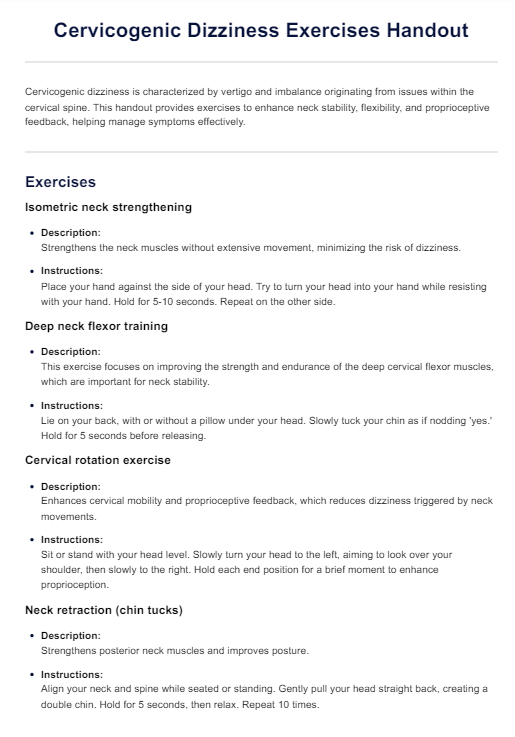Exercises help strengthen the neck and spinal cord muscles, improve flexibility and posture, and enhance proprioceptive inputs crucial for eye movements and maintaining balance. This results in more stable neck movements and reduced dizziness.

Cervicogenic Dizziness Exercises Handout
Our comprehensive handout explores effective exercises and treatment plan options for cervicogenic dizziness. Download your free PDF guide today!
Cervicogenic Dizziness Exercises Handout Template
Commonly asked questions
While these exercises are generally safe, they should be performed under the guidance of a doctor or a physical therapist, especially for individuals with severe symptoms or those with underlying health conditions that may affect their balance or neck structures.
Performing these exercises 2-3 times a day is typically recommended. However, your therapist might suggest doing strengthening exercises at a different frequency based on your specific condition and response to the exercises.
EHR and practice management software
Get started for free
*No credit card required
Free
$0/usd
Unlimited clients
Telehealth
1GB of storage
Client portal text
Automated billing and online payments











